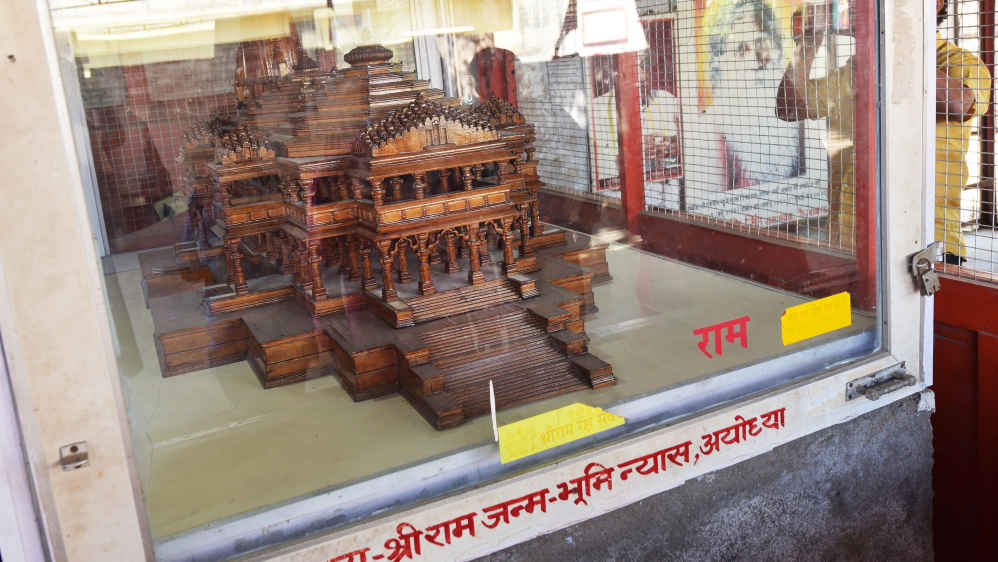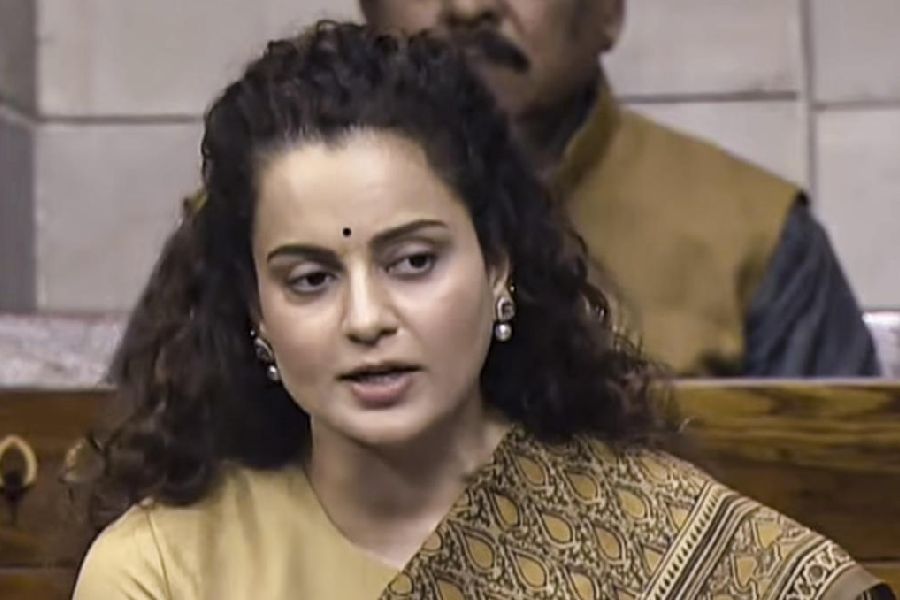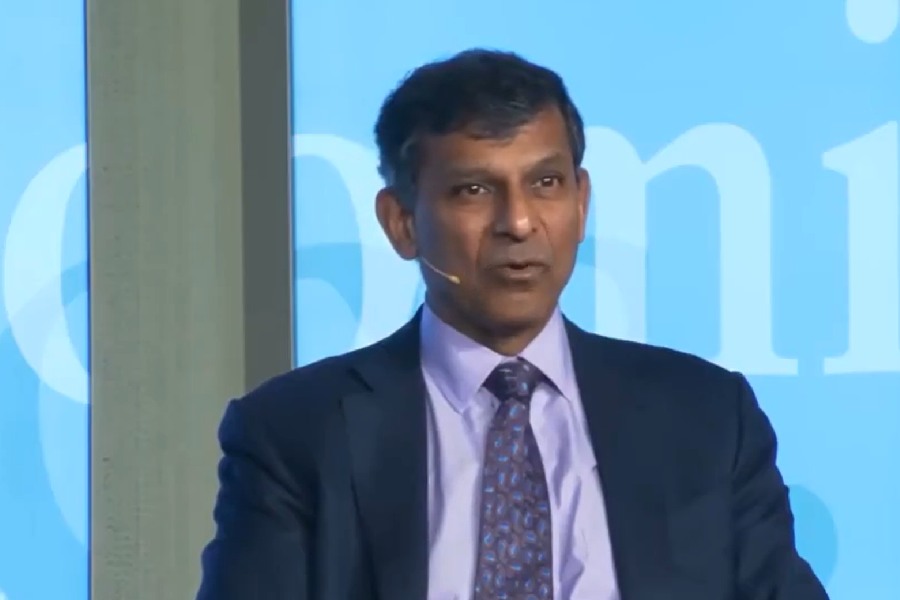The foundation stone-laying ceremony for the Ram temple in Ayodhya on August 5, 2020, is likely to have a long-term impact on national politics. The clearest sign of this is to be seen in the shift in the discourse of the Congress, India’s principal Opposition party, that is now a shadow of its former self.
The Congress leader, Kamal Nath, who was till some months ago the chief minister of Madhya Pradesh, issued an advertisement on the 76th birth anniversary of the former prime minister, Rajiv Gandhi, on August 20. Here, the Madhya Pradesh Congress committee chief sought to offer a new explanation of Rajiv’s legacy, celebrated as ‘Sadbhavna (harmony) Divas’: that he had a vision of a modern India in the 21st century as also of a Ram temple in Ayodhya, which in some manner becomes synonymous with a symbolic Ram rajya. The advertisement says that Rajiv was inspired by Mahatma Gandhi’s Ram rajya, started the telecast of Ramanand Sagar’s Ramayana on television, got the locks of Ram Janmabhoomi opened in 1986, permitted the shilanyas of a Ram temple in 1989 and said, in his last press conference, that a Ram temple would come up at Ayodhya. The message: Rajiv, and not Narendra Modi, is the true architect of the Ram temple movement and that modern India and the Ram temple movement complement each other. On August 4, Priyanka Gandhi had also tweeted that the Ram temple in Ayodhya could become a symbol of national unity. “Let Lord Ram shower his blessing so that this function becomes a celebration of national unity, fraternity and cultural affinity,” she said.
While the Congress is unlikely to match the Bharatiya Janata Party when it comes to taking ‘credit’ for the Ram temple movement, the attempt itself shows that the centre of Indian politics has clearly turned rightward. If the temple visits by Rahul Gandhi in the last few years before elections were part of an old template of the days of Mahatma Gandhi’s Congress — something that the Congress had almost discarded in the heady days of a ‘secular’ opposition to the Ram temple movement in the decades after 1992 — the present template is new. For the Congress has for the first time held an old dispute between sections of Hindus and Muslims to be unequivocally a matter of national unity and cultural pride. “The rank and file of the Congress and all but a few leaders have turned right,” admitted a Congress leader on condition of anonymity.
If Mahatma Gandhi’s Congress was open to being symbolically Hindu but in a pluralist sense and the Congress of Sonia Gandhi was clearly secular — even open to looking at measures aimed at Muslims as a community — there are clear indications that the new Congress of 2020 is open to accepting Hindutva as a legitimate subset of Hinduism and also nationalism.
Prime Minister Narendra Modi, whose six years in power have made Hindutva India’s prime ideology, said on August 5 in Ayodhya that the foundation stone-laying date for the Ram temple was as important a date as August 15 as both marked the ‘culmination’ of long struggles. Hindutva, in other words, earns the same place as the freedom struggle itself.
But this is no longer the belief of the BJP alone. It is now increasingly becoming a symbol of the new normal in India, with Rahul Gandhi adding the caveat that Lord Ram stands for supreme humanism and not hatred. It is important to make sense of this paradigmatic shift. It is also the latest turn in the history of the Congress, even if it does not end up benefiting the party.
The Congress in the days of the freedom struggle and beyond was open to seeing India’s ancient past as its strength. It was also accommodating of its medieval past. If Mahatma Gandhi openly talked about Ram rajya as the ideal of good governance while being a voice of Hindu-Muslim unity, Jawaharlal Nehru himself expressed great respect for Hindu mythology in The Discovery of India, saying that even if all the stories weren’t “true”, they were an inspiration for the common people and stood for what their ancestors were capable, in their imagination, of doing. Nehru celebrates these “imaginary histories”, as he calls them. The civilizational aspect of Nehru is missed by present-day Nehruvians, who focus on Nehru as the builder of modern India alone.
The Congress in the Nehru years remained an organization that had conservative leaders in the states. There were those who celebrated Hindi and Sanskrit — like Sampurnanand in Uttar Pradesh or Seth Govind Das in Madhya Pradesh — in the 1960s. Cow slaughter was also banned by Congress governments in the north in this decade.
Under Indira Gandhi, the institutional turn towards a more Western form of secularism and scepticism towards tradition began with the rise of the academic left in the 1970s. However, the biggest shift came after the 1990 rath yatra of L.K. Advani, which made the Congress embrace secularism as India’s defining official ideology. Communalism, a category constructed in the 1920s, as the historian, G. Pandey, has shown, became the prime Other of national unity after 1990. Secularism as a discourse became central to politics. The regional parties, displaying opportunistic secularism, were the first to dent its legitimacy, as they forged alliances with an ascendant BJP in 1998 and 1999. The quest for power made secularism seem like a logic of convenience.
With the rise of Modi, the Supreme Court’s green signal to a Ram temple at Ayodhya and the BJP’s increasing growth across regions and caste groups, secularism no longer seems viable politics to many. The shift in the Congress is thus a tacit acceptance of the present reality of a Hinduized India. Secular intellectuals are still resisting this — and bringing up the normative promises of a Constitution put in place in the heyday of the Congress — but politicians who meet people on the ground are increasingly accepting a symbolically Hindu polity.
The year, 2020, may go down as the year when India accepted Hindutva as the idea of India, and the Congress will be seen as the moderate collaborator of a strident BJP in this transformation.










